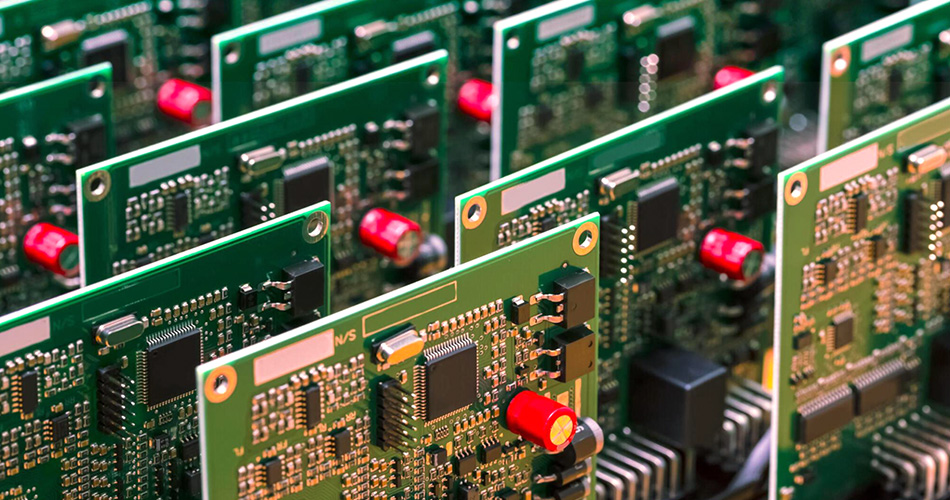- English
- Español
- Português
- русский
- Français
- 日本語
- Deutsch
- tiếng Việt
- Italiano
- Nederlands
- ภาษาไทย
- Polski
- 한국어
- Svenska
- magyar
- Malay
- বাংলা ভাষার
- Dansk
- Suomi
- हिन्दी
- Pilipino
- Türkçe
- Gaeilge
- العربية
- Indonesia
- Norsk
- تمل
- český
- ελληνικά
- український
- Javanese
- فارسی
- தமிழ்
- తెలుగు
- नेपाली
- Burmese
- български
- ລາວ
- Latine
- Қазақша
- Euskal
- Azərbaycan
- Slovenský jazyk
- Македонски
- Lietuvos
- Eesti Keel
- Română
- Slovenski
- मराठी
- Srpski језик
Thermal management in PCBA processing
2024-11-02
In the process of PCBA processing (Printed Circuit Board Assembly), thermal management is a key factor in ensuring the performance and reliability of electronic products. As the power density and integration of electronic devices continue to increase, heat management on circuit boards becomes particularly important. This article will explore thermal management strategies and methods in PCBA processing to help improve the stability and life of products.

1. The importance of thermal management
1.1 Prevent overheating damage
Electronic components generate heat when working. If the heat cannot be dissipated in time, it may cause overheating and damage to the components. In particular, high-power devices, such as CPUs and GPUs, are sensitive to temperature, and overheating will seriously affect their performance and life.
1.2 Improve product reliability
Good thermal management can maintain electronic components working within a suitable temperature range, thereby improving the reliability and stability of the product. Excessive temperature will accelerate material aging and fatigue, leading to premature product failure.
1.3 Ensure circuit performance
Temperature changes will affect the electrical characteristics of electronic components, resulting in unstable circuit performance. Effective thermal management can reduce temperature fluctuations and ensure the consistency and accuracy of circuit performance.
2. Thermal management strategy
2.1 Reasonable layout
In PCBA processing, reasonable component layout is the basis of thermal management. Disperse components with large heat generation and keep them as close to the heat sink or radiator as possible to avoid heat concentration in a certain area. At the same time, pay attention to the spacing between components to facilitate air circulation and heat dissipation.
2.2 Use thermal conductive materials
Thermal conductive materials such as thermal pads and thermal paste can effectively improve the efficiency of thermal conduction. Applying thermal conductive materials between heat-generating components and radiators can reduce thermal resistance, quickly transfer heat to the radiator, and improve the heat dissipation effect.
2.3 Design heat dissipation channels
In PCB design, adding heat dissipation channels and heat dissipation holes can improve the efficiency of heat dissipation. By arranging copper foil heat dissipation layers and thermal conductive vias on the PCB board, heat can be quickly transferred to the heat sink or radiator, effectively reducing the temperature of the circuit board.
3. Heat dissipation method
3.1 Passive heat dissipation
Passive heat dissipation is a method of heat dissipation using natural convection and radiation, including the use of heat sinks, heat sinks and radiators. Passive heat dissipation does not require additional energy consumption and has high reliability. It is suitable for medium and low power electronic devices.
3.2 Active heat dissipation
For high-power and high-density electronic devices, passive heat dissipation alone is difficult to meet the needs. Active heat dissipation methods such as fans and water cooling systems are required. Active heat dissipation improves heat dissipation efficiency through forced convection and is suitable for high-power and high-performance electronic products.
3.3 Heat pipes and thermoelectric cooling
Heat pipes and thermoelectric cooling technologies are commonly used efficient heat dissipation methods in modern electronic devices. Heat pipes use the principle of phase change heat transfer to quickly conduct heat and are suitable for high power density occasions. Thermoelectric cooling uses semiconductor cooling sheets to achieve efficient cooling in local areas and is suitable for applications with extremely high temperature control requirements.
4. Notes on thermal management design
4.1 Thermal simulation analysis
In the PCBA processing design stage, thermal simulation analysis can predict heat distribution and temperature changes and optimize heat dissipation design. Use simulation software to simulate the heat dissipation effects of different solutions, select the best solution, and improve thermal management efficiency.
4.2 Select high-reliability components
Selecting high-reliability components with high temperature resistance and stable performance is an important part of ensuring the thermal management effect. The performance and life of components in high temperature environment are the key factors to be considered in thermal management design.
4.3 Comprehensive consideration of cost and performance
In thermal management design, the cost and performance of the heat dissipation solution need to be considered comprehensively. Efficient heat dissipation solutions are often accompanied by higher costs, so it is necessary to find a balance between performance requirements and cost budgets and select the best solution.
Conclusion
In PCBA processing, thermal management is a key factor in ensuring the performance and reliability of electronic products. Through reasonable layout, use of thermal conductive materials, design of heat dissipation channels and appropriate heat dissipation methods, the thermal management efficiency can be effectively improved and the product life can be extended. In the future, as the power density of electronic products continues to increase, thermal management technology will continue to develop, bringing more innovations and challenges to PCBA processing.
-
Delivery Service






-
Payment Options









